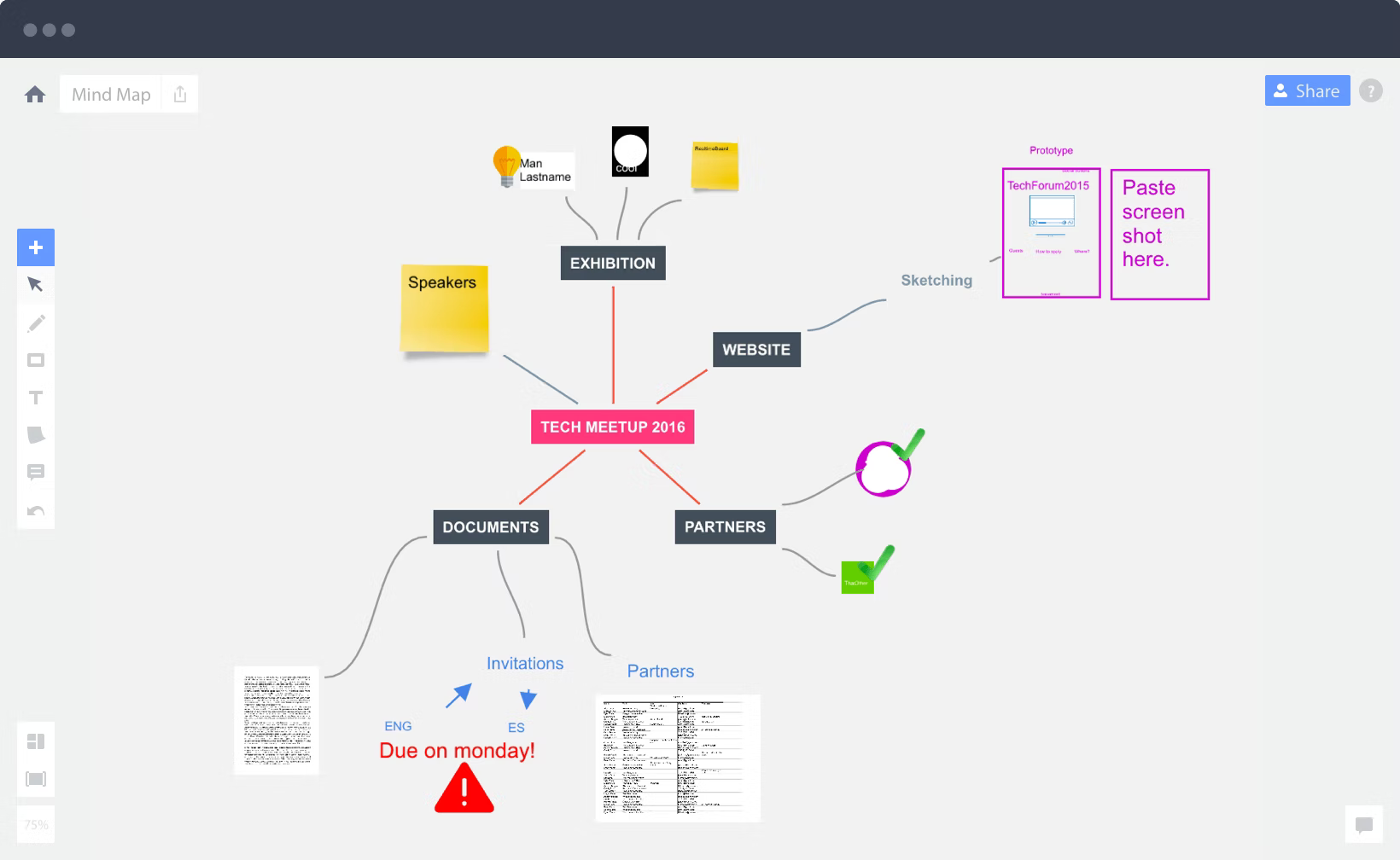71% of HR leaders believe the Monday-Friday, 9-to-5 workweek is outdated, prompting the biggest changes to when people work in nearly a century.
The rise of remote work has undoubtedly been the biggest talent management story over the past two years, but another major development is ready to take its place. Listen up, employers: Workers want a more flexible work schedule, and you’re risking top talent going elsewhere if you don’t give it to them.
That was the message from over 300 HR leaders in the U.S. who responded to Capterra’s 2022 Flextime Survey. Losing out on top job candidates and facing increased pressure from employees, 48% say their organization now allows some employees to set their own work hours, while 47% have adopted a four-day workweek.
These changes to the “when” of work represent the most radical evolution of the workweek since the 1930s. What’s causing it? And, more importantly, what do you need to know about implementing such major scheduling changes at your own organization?
In this report, we’ll analyze our survey data to give HR leaders the answers they need to provide the scheduling flexibility today’s workers crave, without dropping the ball on productivity, collaboration, or culture.
Key findings
Pressure is mounting for companies to adopt flexible time policies: 79% of organizations have lost out on at least one job candidate in the past year by not offering enough flexibility regarding when that person could work.
The typical workweek no longer works for companies’ needs: 71% of HR leaders—including 78% at remote businesses—believe the Monday through Friday, 9-to-5 workweek is outdated.
Most organizations are letting employees set their own hours: 59% of organizations are already or planning to let at least some of their employees set their own hours.
Bring on the three-day weekend: 47% of organizations have already implemented a four-day workweek, with an additional 16% planning to implement one in the future.
Strict work schedules have become an employee dealbreaker
It’s well known by now that the ability to work from home has become a critical sticking point for today’s workers. Last year, 53% of small-business employees told us they were moderately or extremely likely to consider looking for a new job if they couldn’t work from home at least part of the time. Companies that have attempted to corral workers back to the office in recent months continue to face stiff resistance.
Less talked about is the fact that employees consider work schedule flexibility to be just as important. When we asked employees in December 2021 to rank a list of factors from most important to least important in terms of job satisfaction, their top three factors were just as likely to include flexibility over when they could work (20%) as where they could work (22%).
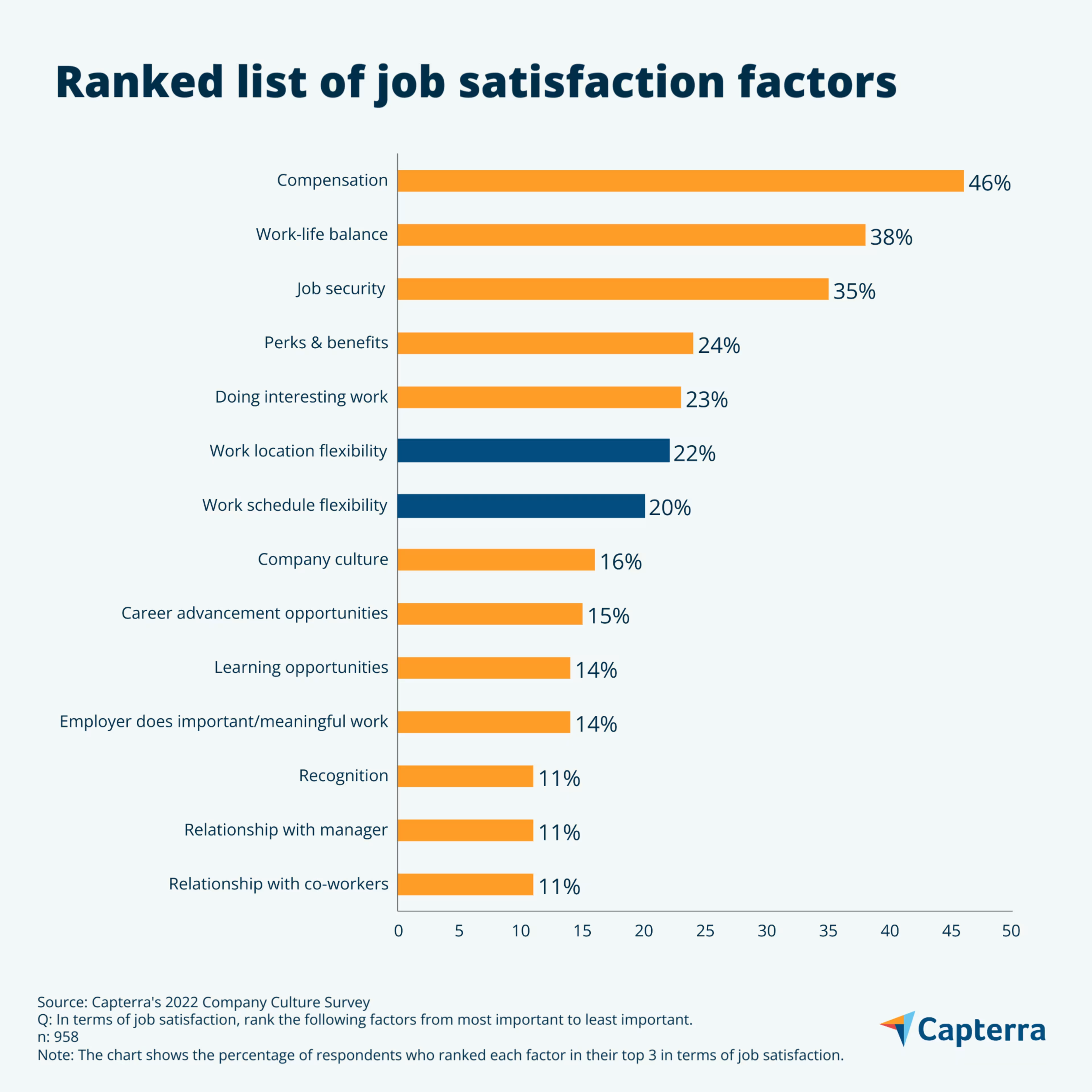
The importance that today’s workers are placing on flexible work schedules isn’t surprising if you consider these three factors:
Strict work schedules have left workers at a disadvantage during the pandemic: While those with more flexibility could quickly respond to an emergency—such as a daycare shutting down or a family member needing to go to the doctor—workers with strict schedules lacked such opportunities.
Peak productivity doesn’t always align with traditional business hours: A study of 15 million GitHub users at the onset of the pandemic found that working from home immediately led to more work being done on weekends and at nontraditional hours.
The more control employees have over their work experience, the happier they are: We found that employees who strongly agree that they can customize their work experience are twice as satisfied with their job, on average, compared to those who strongly disagree.
And in a tight labor market when employees have considerable leverage (there are now two job openings for every person who’s unemployed—an all-time record), they’re making it known that employers need to step up on schedule flexibility.
Not only do 53% of HR leaders in our survey say they have felt more pressure from employees to offer more flexibility regarding when they can work during the COVID-19 pandemic, but 79% say they have lost out on at least one job candidate in the past year by not offering enough flexibility around when that person could work. A majority (58%) have lost out on multiple candidates.
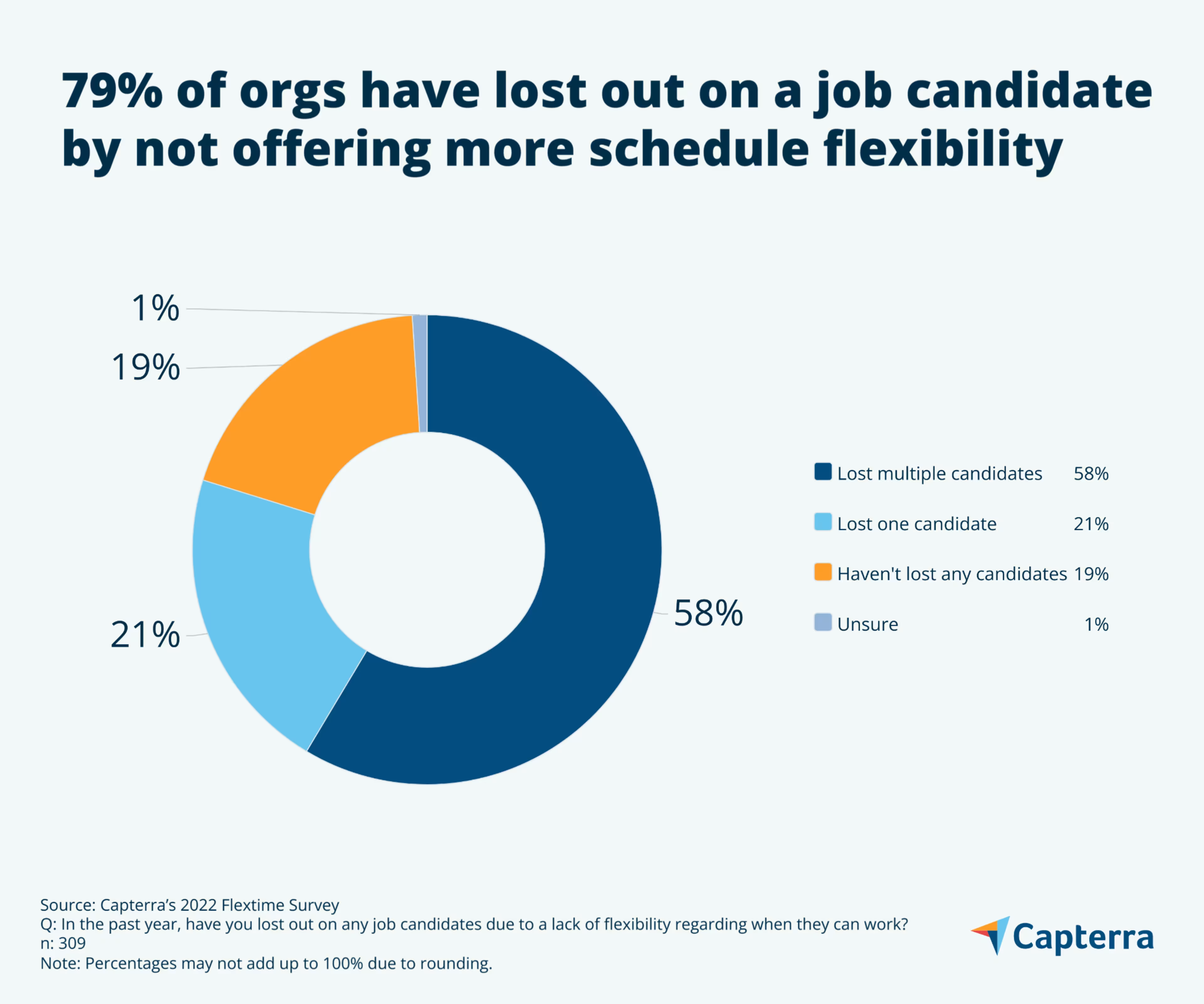
The takeaway for employers is clear: If you don’t adopt more flexible time and attendance policies, you will continue to lose current employees to The Great Resignation, and top job seekers to competitors.
Most organizations will implement flextime, set your own hours, or split shifts
Fortunately, the reality of the situation is not lost on businesses. According to our survey, 71% of HR leaders believe the Monday through Friday, 9-to-5 workweek is outdated, and 55% say their organization now gives workers more flexibility regarding when they can work compared to before the COVID-19 pandemic.
In practice, this looks like some of the most radical work arrangements you can imagine. A majority of HR leaders say their organization already has implemented or plans to implement flextime, set your own work hours, or split shift policies.
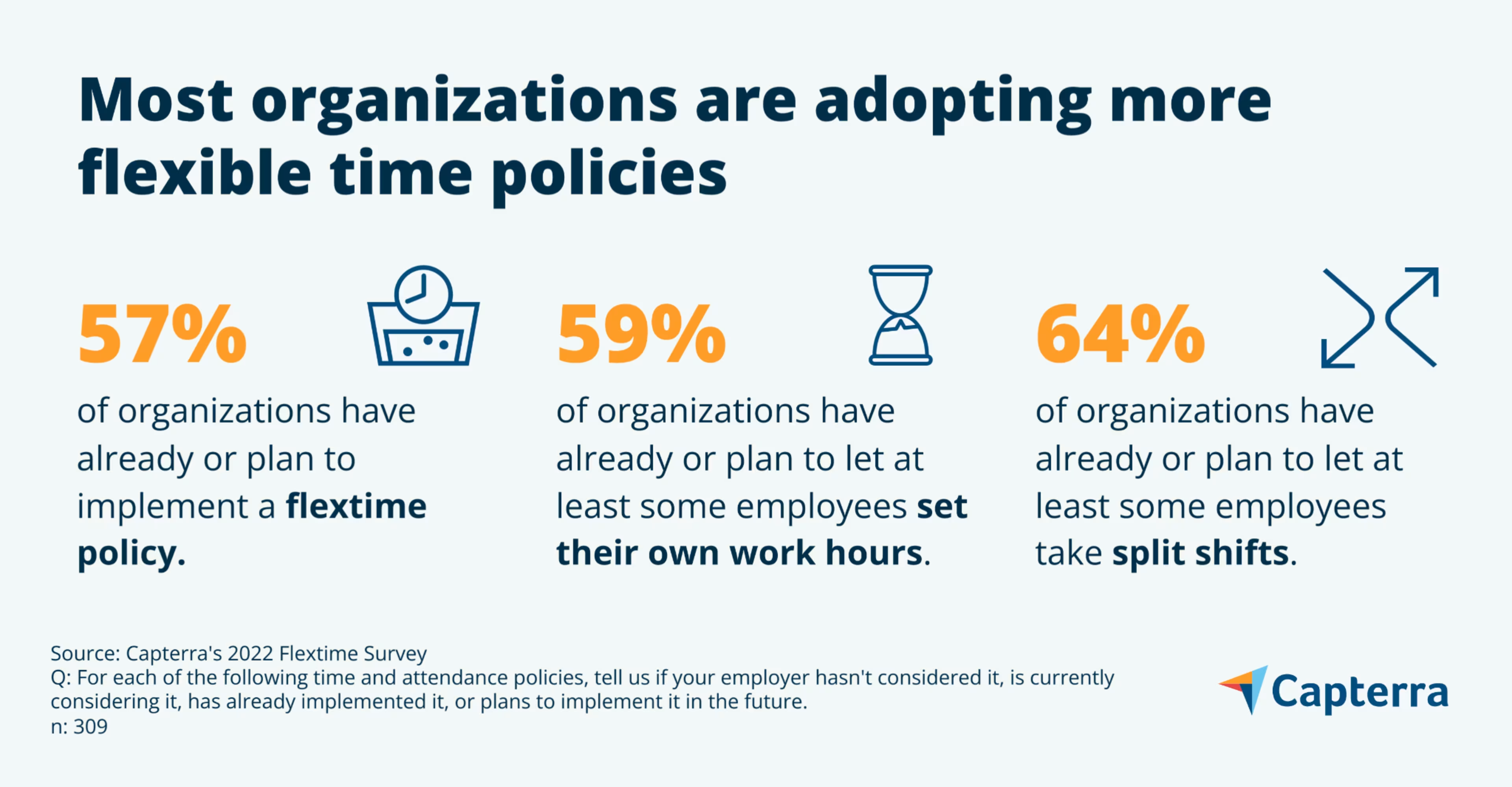
Let’s briefly explain each of these policies in more detail:
If a company has a flextime policy, that means employees have to work a set number of hours each day, but they can choose when they start and end their workday. For example, instead of working 9 a.m. to 5 p.m., employees on a flextime schedule can work 8 a.m. to 4 p.m., or 11 a.m. to 7 p.m.
A set your own work hours policy is exactly what it sounds like. Employees are free to work whenever they want, for however long they want, as long as they’re getting their work done.
A split shift policy splits an employee’s day into two halves, with a lengthy break in between. For example, an employee with a split shift could work 8 a.m. to 12 p.m., take a break until 4 p.m., then work again until 8 p.m.
Who’s implementing these policies?
Overall, our survey finds that hybrid and remote workforce businesses are leading the charge on implementing these radical time policies, while completely onsite businesses are more hesitant (for example, 74% of hybrid businesses have implemented or are planning to implement split shifts, compared to just 44% of onsite businesses).
We also find that, across the board, larger businesses (with more than 1,000 employees) are implementing these policies more often than smaller businesses (with 250 employees or less). Lastly, businesses with largely salary-based workforces are implementing these policies more often than those with largely hourly-based workforces.
Intuitively, this all makes sense. A small, completely onsite business with hourly wage workers (such as a retailer or restaurant) not only has less staff to work with, but also has to more closely align employee hours with customer hours and expectations. On the other hand, a large hybrid or remote business with salaried employees has more staff to play with, and leans toward knowledge work that doesn’t have to align as closely with normal business or customer hours.
While the policies themselves differ, the goal—according to HR leaders who are considering at least one flexible time policy—is the same: Increasing productivity (cited by 51%), attracting job seekers (48%), and alleviating burnout (45%).
Evidence suggests they’ll succeed. When a division of an IT firm gave employees the freedom to determine when they did their work, they saw “reduced burnout, increased job satisfaction, and increased engagement and retention" within six months and without a drop in productivity. However, when the firm was acquired and a rigid 9-to-5 schedule was reimplemented, those outcomes were reversed.
The four-day workweek is actually here
Vice president Richard Nixon once said that a four-day workweek in the U.S. was in the “not too distant future.” That was in 1956. Since then, politicians, economists, and executives have been predicting that the four-day workweek was just around the corner, without it ever coming to fruition.
But our data suggests the time for a four-day workweek has finally come. When we asked HR leaders about a four-day workweek, 47% say their organization had already implemented it, while another 16% say they are planning to implement it in the future. It’s a true four-day workweek, too: One less day of work, with no extra hours on the other days to make up for it.
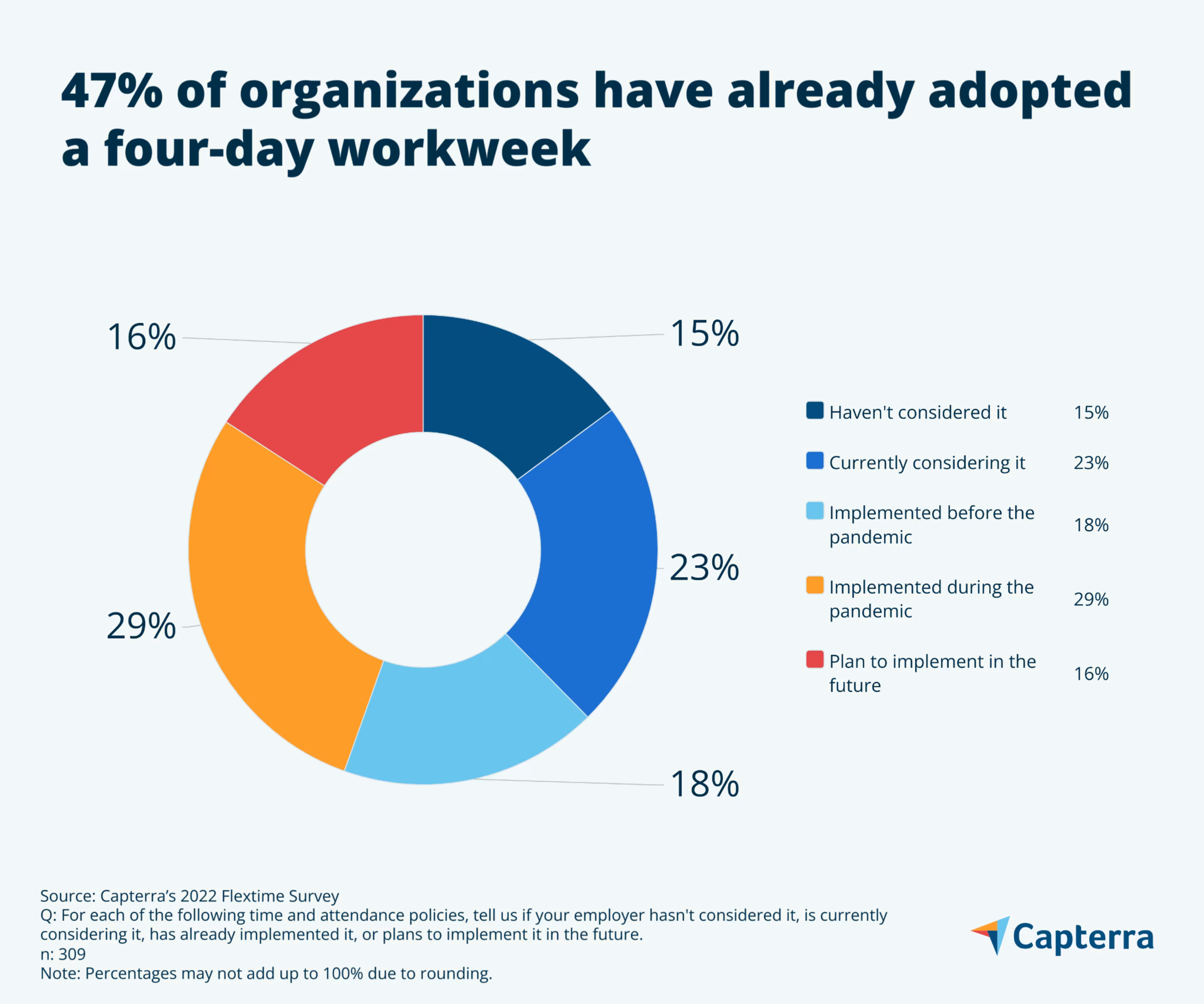
Why now? The demand for more flexibility is surely a factor, as is skyrocketing rates of employee burnout due to overwork and pandemic fatigue. But a bigger reason may simply be that enough institutions—from major employers to entire countries—have tested the waters with a four-day workweek now to finally make the idea feel truly feasible:
A four-day workweek trial in Iceland between 2015 and 2019 was so successful that almost 85% of workers in the country now have the option to only work four days a week. Spain and Belgium are on track to join them, and a number of countries in Asia—Japan, Indonesia, South Korea, and India—are currently experimenting with a shorter workweek, too.
The California legislature put forth a bill this year that would require companies to start paying overtime after 32 hours of work per week instead of 40, effectively incentivizing employers in the state to move to a four-day workweek. The bill was ultimately shelved due to the legislative session running out of time, but it’s expected to be considered again in the next session.
38 companies in the U.S. and Canada are trialing a four-day workweek from April through September this year through a program launched by nonprofit 4 Day Week Global. Businesses involved in the trial range from “startups with 25 people to large organizations with several hundred.”
A Qualtrics survey from February found that a staggering 92% of employees are in favor of a four-day workweek. If enough employers follow through and adopt a shortened workweek, it could quickly grow from a niche perk to standard practice. Fail to join them, and you could see your best workers walk out the door.
4 best practices when adopting flexible time and attendance policies
The writing is on the wall if you’re an employer: Offer more flexible schedules, or risk being unable to compete for talent.
Implementing policies like flextime or a four-day workweek don’t come without their fair share of challenges, though. The HR leaders who have at least considered a flexible policy in our survey told us as much: The top challenges they’ve encountered or expect to encounter from implementing flexible time and attendance policies include managing employee workloads (cited by 40%), measuring productivity (40%), and inconsistent employee availability (38%).

So if you’re considering implementing some of these flexible scheduling policies at your own organization, here are four best practices to ensure a smooth transition while avoiding these challenges.
1. Let tech do the heavy lifting on shift scheduling
It’s hard enough to schedule hourly workers when you’re accounting for full-time vs. part-time, overtime, who’s out sick or on vacation, and more. Throw in additional wrenches like split shifts or flextime, and this process can quickly become unwieldy to manage manually.
Instead of relying on spreadsheets or whiteboards, invest in an employee scheduling software system. With these systems, all managers need to do is input important constraints (what type of workers you need, who has a split shift, maximum overtime budget, etc.), and the software takes care of the rest to create an optimized shift schedule.
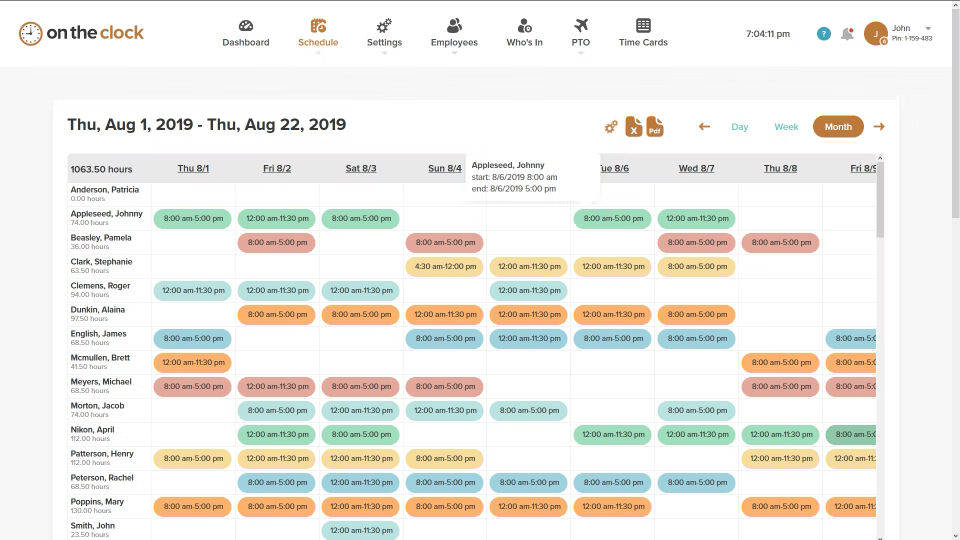
A work shift schedule in OnTheClock.com (Source)
If a shift isn’t to a worker’s liking, they can easily swap with a co-worker or put the shift back up for anyone who meets the criteria to grab without the need for a manager to get involved. Employees get more say over their shifts, and managers don’t have to bend over backwards trying to manually thread the needle on a perfect schedule. It’s a win-win.
Check out Capterra’s Shortlist of the top employee scheduling systems.

2. Focus performance measurement on outcomes (instead of time spent)
Presenteeism—when an employee is technically on the clock but not actually doing any work—costs companies millions in lost productivity every year. Giving employees more say over their work schedule can drastically reduce presenteeism, but it requires an important shift: You have to measure performance in terms of end results instead of time spent on a task.
By focusing on output (such as number of sales or lines of code written) instead of input (such as time spent on the phone or a computer), not only can you better measure every employee’s direct contributions to the business, but you also give workers more flexibility in how they reach their performance goals.
Work with managers to come up with calibrated, outcome-based KPIs for each employee, then consider investing in a performance management system to automate the tracking of these goals.

Performance management in Dayforce HCM (Source)
Check out Capterra’s Shortlist of the top performance management systems.

3. Implement the right tools for better asynchronous collaboration
As global businesses can attest, trying to schedule meetings when employees are on completely different schedules or in vastly different time zones can be painful. Meetings still have an important place in a flexible schedule environment, but asynchronous collaboration is a better solution in most cases.
Asynchronous collaboration refers to any collaboration that doesn’t happen in real time (email, for example). But there are a variety of asynchronous collaboration tools out there beyond email that can help employees on different schedules share ideas, problem solve, and figure out next steps:
A cloud-based document management system gives workers shared access to documents, spreadsheets, presentations, and more that update immediately as users add and edit items.
A whiteboard tool lets users draw or map out freeform ideas, which are then saved for other workers to see and add to at a different time.
A knowledge management system can house and organize training resources that employees can access and update as needed.
Check out Capterra’s Shortlist of the top document management systems.

4. It starts at the top
Implementing a four-day workweek doesn’t mean much if bosses are still emailing their direct reports on Fridays. By its very design, flexible work schedules mean communication won’t be as rapid. But that’s OK.
Whatever flexible work arrangement policies you implement, executive leadership needs to lead by example. That means taking on outcome-based performance metrics, putting work down when personal matters need to take priority, and being a little patient if workers don’t respond right away.
If highly visible leaders actually practice what they preach, employees will follow.
If you liked this report, check out these other talent management resources:
Note: The applications selected in this article are examples to show a feature in context and are not intended as endorsements or recommendations. They have been obtained from sources believed to be reliable at the time of publication.

